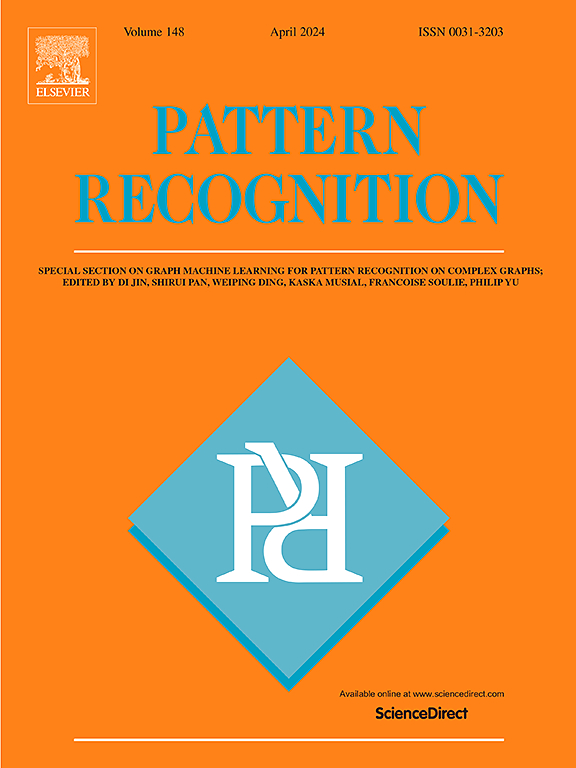Unbalanced episode meta-learning with Bi-Sparse contrastive network for hyperspectral target detection
IF 7.5
1区 计算机科学
Q1 COMPUTER SCIENCE, ARTIFICIAL INTELLIGENCE
引用次数: 0
Abstract
Deep learning (DL) has been extensively applied to hyperspectral image target detection (HTD) with notable success. However, many existing DL-based methods focus on expanding the training samples to capture richer information, resulting in high computational costs and overfitting risks. Additionally, challenges such as complex data distributions and limited model transferability remain significant obstacles. To address these issues, we propose an unbalanced episode meta-learning with Bi-sparse contrastive network (UEML) for HTD. In contrast to directly modeling the target dataset, our approach leverages meta-learning to pre-train the model on a categorical dataset rich in label information, resulting in a universal detection model. Specifically, an unbalanced episode training paradigm is proposed for meta-task construction, which simulates the category-imbalance scenarios inherent to HTD by adaptively adjusting the support set, enabling the acquisition of content-agnostic yet task-relevant transferable meta-knowledge. Additionally, elastic sparsity constraints are imposed on the feature extraction process across both spatial and spectral dimensions, enhancing the model’s generalization and discriminative capabilities. During the fine-tuning phase, we employ a pseudo-sample generation strategy based on segmented sampling and spatial–spectral hybrid augmentation to construct the training set, allowing for more accurate and comprehensive sample extraction from complex background regions. This strategy effectively mitigates underfitting caused by insufficient information. Furthermore, contrastive learning is incorporated to address complexities arising by multi-class background characteristics in the pseudo-binary classification task, improving the stability of the detection model. Our proposed algorithm demonstrates rapid target detection capabilities, and experiments on six public datasets indicate that it performs significantly better than existing state-of-the-art methods. Code is available at: https://github.com/QYo-Liu/UEML.
基于双稀疏对比网络的非平衡集元学习高光谱目标检测
深度学习在高光谱图像目标检测中得到了广泛的应用,并取得了显著的成功。然而,许多现有的基于dl的方法侧重于扩展训练样本以获取更丰富的信息,这导致了较高的计算成本和过拟合风险。此外,复杂的数据分布和有限的模型可移植性等挑战仍然是重大障碍。为了解决这些问题,我们提出了一种基于双稀疏对比网络(UEML)的不平衡情节元学习方法。与直接对目标数据集建模相比,我们的方法利用元学习在富含标签信息的分类数据集上预训练模型,从而产生通用检测模型。具体而言,提出了一种用于元任务构建的不平衡情节训练范式,该范式通过自适应调整支持集来模拟HTD固有的类别不平衡情景,从而获得与内容无关但与任务相关的可转移元知识。此外,在空间和光谱维度上对特征提取过程施加了弹性稀疏性约束,增强了模型的泛化和判别能力。在微调阶段,我们采用基于分段采样和空间-光谱混合增强的伪样本生成策略来构建训练集,从而从复杂的背景区域中更准确、更全面地提取样本。这种策略有效地缓解了由于信息不足而导致的欠拟合。此外,采用对比学习方法解决伪二值分类任务中多类背景特征带来的复杂性,提高了检测模型的稳定性。我们提出的算法展示了快速目标检测能力,并且在六个公共数据集上的实验表明,它的性能明显优于现有的最先进的方法。代码可从https://github.com/QYo-Liu/UEML获得。
本文章由计算机程序翻译,如有差异,请以英文原文为准。
求助全文
约1分钟内获得全文
求助全文
来源期刊

Pattern Recognition
工程技术-工程:电子与电气
CiteScore
14.40
自引率
16.20%
发文量
683
审稿时长
5.6 months
期刊介绍:
The field of Pattern Recognition is both mature and rapidly evolving, playing a crucial role in various related fields such as computer vision, image processing, text analysis, and neural networks. It closely intersects with machine learning and is being applied in emerging areas like biometrics, bioinformatics, multimedia data analysis, and data science. The journal Pattern Recognition, established half a century ago during the early days of computer science, has since grown significantly in scope and influence.
 求助内容:
求助内容: 应助结果提醒方式:
应助结果提醒方式:


